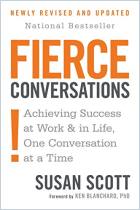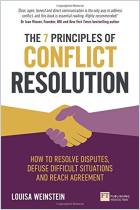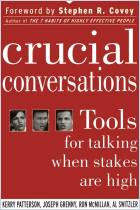Acesse a sua conta getAbstract para obter o resumo!

Acesse a sua conta getAbstract para obter o resumo!
Douglas Stone, Bruce Patton and Sheila Heen
Difficult Conversations
How to Discuss What Matters Most
Penguin, 2000
Sobre o que é?
You know that difficult conversation you don’t want to have? Here’s how to have it.
Recommendation
You will face difficult conversations throughout your life, but now you can learn how to cope with them. This book provides a framework and various strategies for achieving better outcomes from hard exchanges. Douglas Stone, Bruce Patton and Sheila Heen use principles, illustrative stories and charts to teach you how to understand the components of challenging conversations, and how to prepare for them and transform them into something constructive. The language of the book is clear, insightful, concise and always helpful. You can use these principles in business, but the stories also concern relationships in your everyday life. getAbstract says everyone from teenagers to mature adults can use the communication skills discussed in this wise book.
Summary
About the Authors
Douglas Stone, Bruce Patton, and Sheila Heen are professors at Harvard Law School and are part of the Harvard Negotiation Project. They have each written, spoken and consulted on negotiation and communication.

























Comment on this summary